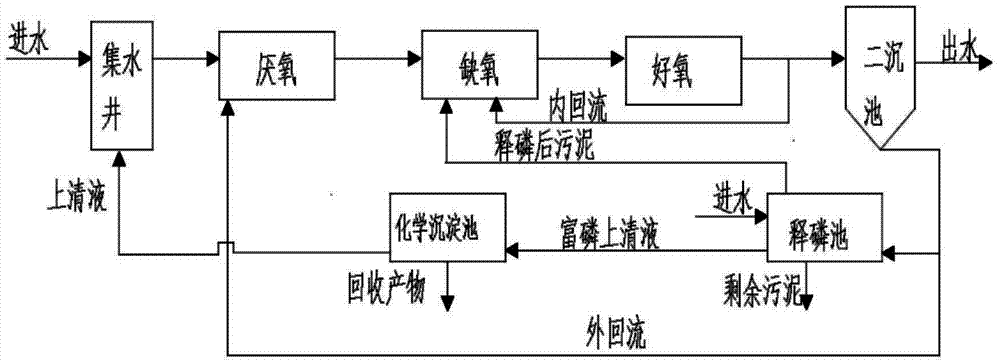Coupled sewage biological nitrogen and phosphorus removal and phosphate recovery method
A technology for denitrification and phosphorus removal, and biological sewage, which is used in phosphorus compounds, chemical instruments and methods, and multi-stage water/sewage treatment. and other problems to achieve the effect of alleviating equipment scaling problems, improving phosphorus removal effect, and reducing phosphorus content
- Summary
- Abstract
- Description
- Claims
- Application Information
AI Technical Summary
Problems solved by technology
Method used
Image
Examples
Embodiment Construction
[0026] The present invention is applicable to newly-built urban sewage treatment plants adopting biological denitrification and dephosphorization processes, or upgrading of existing sewage plants. The biological denitrification and dephosphorization processes adopted by sewage plants include anaerobic, anoxic and aerobic units . The side stream process recovers phosphate; the sludge after phosphorus release is returned to the anoxic tank of the mainstream biological treatment system.
[0027] The coupling type sewage biological denitrification and phosphorus removal and phosphate recovery method of the present invention can recycle phosphorus resources, and can also improve the nitrogen and phosphorus removal effect of mainstream biological processes,
[0028] please see figure 1 , from anaerobic-anoxic-aerobic (A 2 O) Biological nitrogen and phosphorus removal system for phosphate recovery.
[0029] The first step is to build a side-stream phosphorus recovery system couple...
PUM
 Login to View More
Login to View More Abstract
Description
Claims
Application Information
 Login to View More
Login to View More - R&D
- Intellectual Property
- Life Sciences
- Materials
- Tech Scout
- Unparalleled Data Quality
- Higher Quality Content
- 60% Fewer Hallucinations
Browse by: Latest US Patents, China's latest patents, Technical Efficacy Thesaurus, Application Domain, Technology Topic, Popular Technical Reports.
© 2025 PatSnap. All rights reserved.Legal|Privacy policy|Modern Slavery Act Transparency Statement|Sitemap|About US| Contact US: help@patsnap.com

